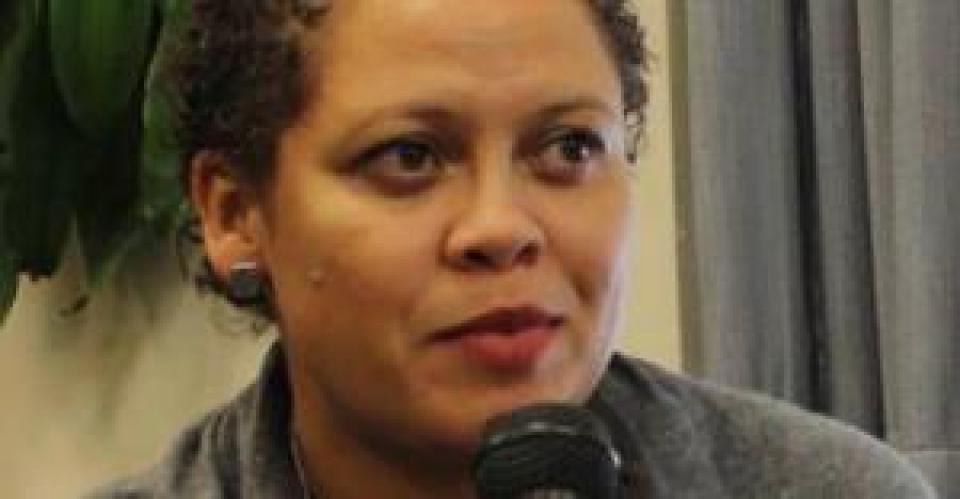
As part of an NGO parallel event at CSW58, hosted by the Southern Africa Gender Protocol Alliance and Gender Links, Jan Moolman, Women’s Rights Programme project coordinator from the Association for Progressive Communications, explains how important information and communication technologies (ICTs) and the media are in advancing gender equality and protecting women’s rights.
Here is the transcript of Jan Moolman’s presentation:
“Our work looks at the relationship between women’s rights and technology. I am here to talk about the centrality of media and ICTs in any conversations talking about development. I want to start by reminding us of a few things, and why we are in a really important moment in 2015, and that has got to do with the convergence of a series of instruments that are really critical for women’s rights. The first is Beijing+20, the second is the ending of the MDGs and their review, and the third are the post-2015 forward looking processes. And also importantly for us is the WSIS, which is the World Summit on the Information Society, and it is an acronym not usually heard in women’s rights spaces.
“One of the things we are concerned about both as APC and also as someone from SADC who has worked with Gender Links in the past, is that there has been a big deprioritisation in any conversations around gender, and media and ICTs. And in some ways it is understandable. Why talk about media and technology when we have the highest levels of violence against women? When we have black lesbians dying every day all through the region? When we know that people are hungry and starving? So the question really is, for us, why we should centralise this and why we should really be looking at media and ICTs as a very important politicised issue to be talking about. I want to take us back to what we have now, and what we have now is Section J in the Beijing Platform for Action. And just to remind us of the two strategic objectives: The first one is to ‘Increase the participation and access of women to expression and decision-making in and through the media and new technologies of communication,’ and the second is to ‘Promote a balanced and non-stereotyped portrayal of women in the media.’
“I was very glad to hear talking about social norms, because usually it is a very interesting and easy entry point into talking about why media is so central. We know it is a key socialising agent, and apart from that it sets the agenda in some ways. It gives us the view of the world that helps us see ourselves through a very particular lens, and when the representation we see of ourselves is already skewed, what is that telling us?
“What are the things that we do know? We know that less than a quarter of those read or heard about in print, radio or television across the globe are women. Less than a quarter, we know already something is wrong. We know that half of stories reinforce gender stereotypes, and that is nearly eight times higher than stories that challenge gender stereotypes. Again, we are talking about social norms. We know that 73% of top management jobs in media companies are occupied by men. These statistics come from the International Women’s Media Foundation and also the Global Gender and Media study, which are very recent tools.
“We also know that the internet and technology have changed how we live, how we love, and how we play. This week we cellebrated 25 years of the internet and it was a very significant moment because it really has changed a number of different things. And as we celebrated it would remind us of the optimism that the internet gave us: Finally we have a time to shift things! We will make our own media, we will be present, we will shift how we are represented… and 25 years later, can we really say that after the statistics I have given us? No, we can’t. And in SADC in particular there is a huge movement and lots of conversations around access to infrastructure, access to the internet. But what is really problematic is that those conversations happen outside of conversations around access to content, and access to decision making. Who decides what is important for who when? Who decides what languages are privileged in these conversations around access? Who decides what is developed? In Southern Africa there is a great push around mobile technology, but there are not any conversations about what you cannot get on the mobile. And if we are pushing mobiles, at what cost?
“Another point to mention is that in sub-Saharan Africa in 2011 there were twice as many men as women on the internet, and yet at the same time we hear about women on mobiles as a big kind of push but it hasn’t changed that statistic at all.
“A few others things that we know: In a survey that APC did looking at the value of the internet for sexual rights activists, of a sample of 359 responses, we found that 98% of sexual rights activists said the internet is an important public space for advancing sexual rights. We also know that 51% of them have received violent or threatening messages. We also know that as more women get online, more women are also beginning to get offline, because of cyberharassment, and threats, and misogyny. And a very good example is in the UK recently on the Twitter outrage that really brought to the fore some of the problematic norms and values that are just being reproduced on the internet. And the purpose of many of those misogynistic comments is exactly the same of those that happen to us on the street: Is to silence us, to say ‘you have no right to be here’, to say ‘leave’. We are really beginning to see that happening in huge numbers.
“So as the opportunity is still presenting itself to us, so is the moment for us to respond, to say we are actually not going anywhere. Also important in this conversation is to be quite aware of the fact that women journalists are also a particular category of women who are experiencing misogynistic threats online. And what is being used? The same thing: our sexuality. ‘Look what she does, she has no right to say that.’ So there are particular kinds of tactics that target reputation using the age old strategies that patriarchy has always used. But no one is having these conversations, because the internet and the media, they seem not that important, there are other things to worry about. This is why we need to centralise this conversation and applaud the Southern African movement, and the SADC Gender Protocol, for being at the forefront, they are making these issues be more centralised. Because unless we are able to understand what is happening, developing the kind of data that is useful for us, there are not going to be resources, and 20 years from now we will still be trying to hold the same line, and we are going to have exactly the same conversation. And if we are talking about Beijing+20, and we are talking about any indicators of any kind developed for whatever reason, we have to centralise media and ICTs.”
Watch and share the video in Gender Links’ YouTube channel .
- 8914 views







Add new comment